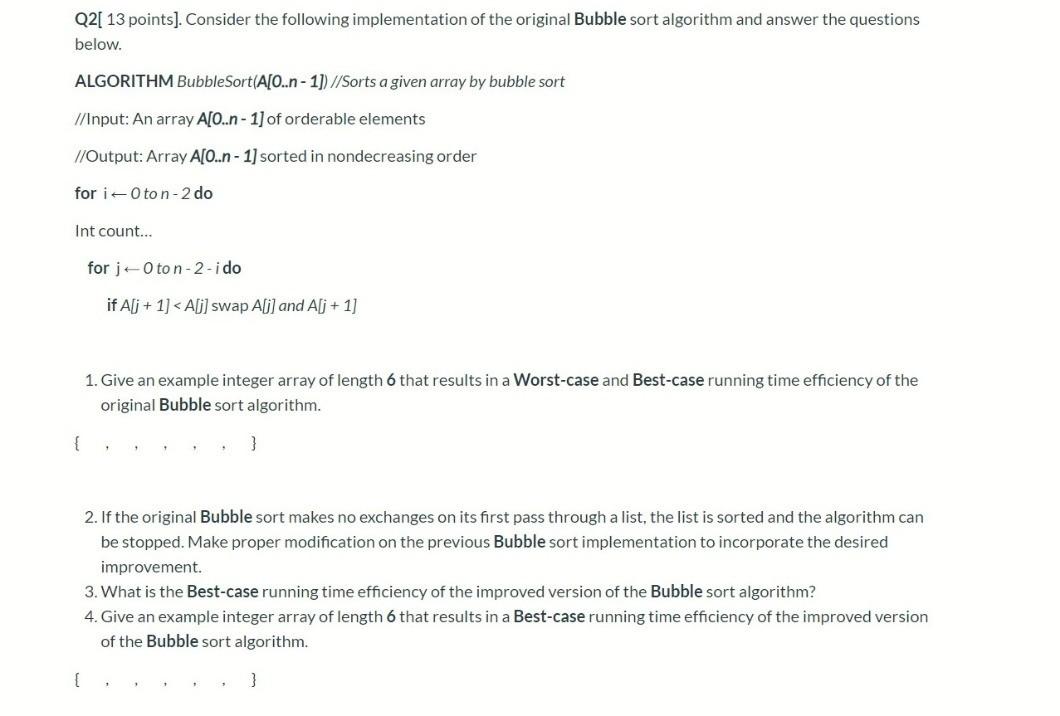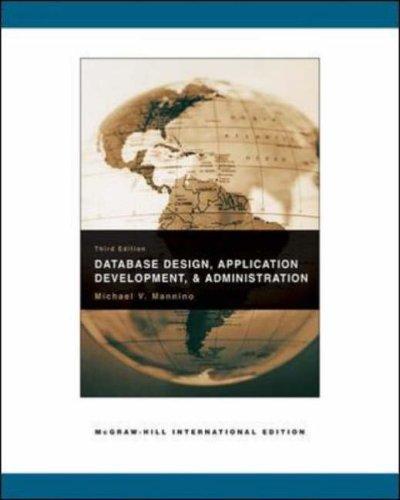Question
Q2[ 13 points]. Consider the following implementation of the original Bubble sort algorithm and answer the questions below. ALGORITHM BubbleSort(A[0..n - 1]) //Sorts a given

Q2[ 13 points]. Consider the following implementation of the original Bubble sort algorithm and answer the questions below.
ALGORITHM BubbleSort(A[0..n - 1]) //Sorts a given array by bubble sort
//Input: An array A[0..n - 1] of orderable elements
//Output: Array A[0..n - 1] sorted in nondecreasing order
for i 0 to n - 2 do
Int count
for j 0 to n - 2 - i do
if A[j + 1]
Give an example integer array of length 6 that results in a Worst-case and Best-case running time efficiency of the original Bubble sort algorithm. { , , , , , }
If the original Bubble sort makes no exchanges on its first pass through a list, the list is sorted and the algorithm can be stopped. Make proper modification on the previous Bubble sort implementation to incorporate the desired improvement. What is the Best-case running time efficiency of the improved version of the Bubble sort algorithm? Give an example integer array of length 6 that results in a Best-case running time efficiency of the improved version of the Bubble sort algorithm. { , , , , , }
1 and 2
Q2[ 13 points). Consider the following implementation of the original Bubble sort algorithm and answer the questions below. ALGORITHM BubbleSort(A[O..n-1])//Sorts a given array by bubble sort //Input: An array A[O..n - 1] of orderable elements //Output: Array A[O..n-1) sorted in nondecreasing order for iOton-2 do Int count... for 10 ton-2-i do if A[j+1]Step by Step Solution
There are 3 Steps involved in it
Step: 1

Get Instant Access to Expert-Tailored Solutions
See step-by-step solutions with expert insights and AI powered tools for academic success
Step: 2

Step: 3

Ace Your Homework with AI
Get the answers you need in no time with our AI-driven, step-by-step assistance
Get Started


